Stick brings Rapid Red Mustang ‘Bob’ to life
By John Gilbert
It’s often disappointing when my test-drive week with a particularly neat car comes to an end, but I found a way to ease the pain a few weeks ago, after driving the new mid-engined Corvette Sting Ray. When it arrived at my Duluth home, the Sting Ray was not alone. Also delivered was a very neat new Ford Mustang, painted Rapid Red Metallic with a bright white racing stripe running nose to tail, over the roof, and down the middle.
As if to test my overload skills, I wondered how I would spend adequate time in both cars during the upcoming week, but then I got a message: There had been a mistake, and the Corvette, which was in pre-production short supply, would only be with me for three days. Problem solved. I drove the heck out of the Corvette for that Monday, Tuesday and Wednesday without even getting into the Mustang, knowing that as soon as the guys showed up to take away the Sting Ray Thursday morning, I could climb into the Mustang and drive off over the horizon.
I have driven different Mustang models in recent years, including the Shelby GT500, the Shelby GT350, the Mustang GT, and the Mustang Bullitt, and with the racing stripe and a 6-speed manual transmission, and that new-generation ferocious look, I figured this must be a GT, at least. The information sheet said it was a Mustang “Premium,” which only meant that it had some upscale features, like dual exhausts, a rear spoiler, and other trim things.
Most impressively, when I took off down the road, I noticed the Mustang had excellent acceleration, and it handled with precision. I went back to the information sheet and, to my surprise, noticed that for an engine, it had a 2.3-liter 4-cylinder, with Ford’s Ecoboost system of turbocharging.
I have always regarded the Shelby GT350 and the Bullitt as my two favorite current-generation Mustangs to drive, but I will have to find room to squeeze this one in among them.
Ford has discontinued most of its cars, but the Mustang stays strong as an annual tribute to the pony car Ford brought out in 1965 to revolutionize American driving habits. Here was a 2-plus-2 coupe, very sporty looking and handling, for a bargain price. Everybody wanted one, and every other manufacturer hustled to come out with a competitor.
As power has risen higher and higher on the scope of sporty cars, it has become more and more apparent that we don’t need as much power as can be produced, but we could really have a lot of fun if the car handled as well as a sports car and could parlay adequate power into impressive fuel-economy numbers, especially with that 6-speed, right out of a GT350.
Ford recently announced that it is discontinuing the Shelby GT350, much to my disappointment, brecause the GT350 with 527 horsepower out of its 5.2-liter V8 is a lot of fun, if not as neck-snapping as the GT500 with its supercharged version of the 5.2 developing 760 horsepower.
I am here to suggest that the car I test-drove bridges the gap. The venerable 2.3-liter 4, when turbocharged, produces 310 horsepower at 5,500 RPMs and 350 foot-pounds of torque at 3,000 RPMs. Even with the Mustang having grown to 4,000 pounds these days, that’s enough power to make you not miss the V8’s extra oomph.
Ford has wisely dropped the V6, the previous base engine, and now uses the 2.3 as its base engine. But a look at the accompanying photos will make you realize that if it looks the part, goes with the force that the look promises, and handles great, we can save a lot of money by buying the Ecoboost 4. We liked the little toggle switches at the base of the center stack, controlling various functions including driving modes, from normal to sport.
Joan and I, with son Jack visiting, discussed driving northward. Jack insisted we should take the Mustang, and that he would curl up in the back seat — which is best kept for kids or short people — and off we went through the back roads to Virginia, Minnesota. We set a destination for Canelake’s Candy shop to get what is by now our standard fountain treats — orange soda for Joan, and turtle sundae for me. And several different selections of their homemade chocolate and caramel.
We had a lot of laughs coming back, stopping for a walk, and then returning to Lakewood. We got 28.7 miles per gallon, and probably could coax more if I didn’t enjoy running up the revs in first, second and third gears so much. EPA estimates say 30 on the road.
During that week, we were impressed that the already departed Corvette Sting Ray was priced in the mid-$70,000 range. We were very impressed that the test Mustang started with a base price of $26,670, with the Premium model starting at $34,755, and loaded with options listed for $35,850.
There are only two issues I can see. First is the sound. There is practically no sound, and certainly not the throaty rumble of the V8. Second, the test-style Mustang is sorely in need of a name. You can call it a “Premium,” just because of the neat leather seats, fancy dash and gloss-black 19-inch alloy wheels. No, it needs something, something so we don’t miss the Shelby GT350, and to pinch-hit for the Bullitt, or the GT.
My suggestion is: “Bob.”
That’s right, I’ll take the Mustang Bob and be happy. Bob is named after a lifelong friend of mine, named Bob Curtis. We both grew up at opposite ends of Lakewood, and we went to school together first and second grades at Congdon Park, third through sixth at the brand new elementary Lakewood school, seventh through ninth at Washington Junior High, and 10th through 12th at old Duluth Central. I had about four circles of friends in those days, and Bob and I were in a non-sports wing, playing chess, appreciating the same music, and enjoying cars. When we graduated from Central, we both went to UMD, and near the end of our sophomore years, we both realized we were in need of transferring to the University of Minnesota in Minneapolis.
Bob was going to study architecture, and I was pursuing journalism school, so we decided to room together, along with two other guys we knew from Duluth and UMD. We had a lot of great times, and we both met our wives while we were down there, living in an apartment now located where the U. has built some athletic facilities.
Bob always liked cars, as I did, but I pursued them for reviews. After Bob and Kathy spent a couple years on a major design project in Iran, they returned home and bought a townhouse in Arden Hills, just across I-694 from where we had a townhouse in Shoreview. Our kids grew up there, and we stayed close. I gave Bob a ride in the new Ford Taurus SHO that had just come out, and he bought one, which ran strong and gave him some grief, but he loved it. I had owned a Mustang Boss 302 for years, and he always admired that car, too, so one of the most recent cars he bought was a Mustang. It looked good, lean and clean, and it was really a base model — A V6 engine, stick shift, no fancy stuff, but he enjoyed driving it.
After I had spent 31 years writing for the Minneapolis Tribune, and Star Tribune, Joan and I moved back to Duluth where I had a lucrative job offer from Murphy McGinnis Media’s Up North Newspaper Network. Bob and Kathy would stop to visit when they made annual trips to Grand Marais, but those became less frequent in recent years. We heard Bob had been ill, and we intended to get in touch with them when we went to the Twin Cities for a game, or to visit our older son, Jack.
I still read the Minneapolis Tribune seven days a week, and a couple weeks ago, I spotted an item in the obituaries. Robert Allen Curtis, 78, had died of pancreatic cancer, leaving family, friends, accomplishments — and one very good but now-distant friend in Duluth. When I called, Kathy told me Bob hadn’t been able to drive the last while, but he had gotten over a previous ailment before he was blindsided by inoperable pancreatic cancer.
I’m not over it yet. These things take time. Former classmates of ours will remember Bob and be surprised, too, I’m sure. I wondered what they did with Bob’s old Mustang. Not that it matters.
Except now. I’ve always joked about how we personalize our cars, often naming them and assigning human tendencies to them. This would be a departure, but if Ford is looking for a special name to give to a surprisingly over-achieving basic Mustang — call it “Bob.”


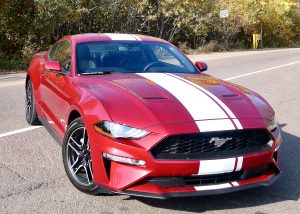
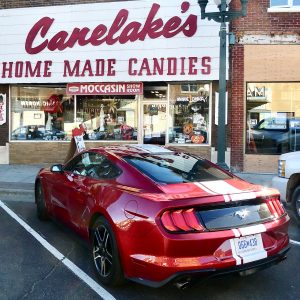
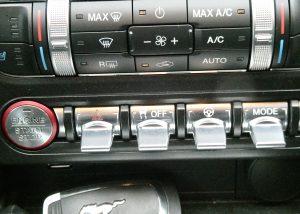
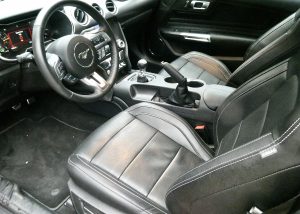
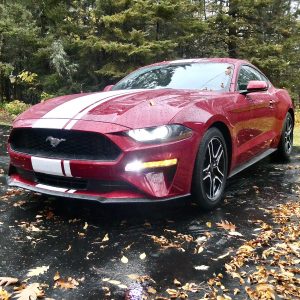
 John Gilbert is a lifetime Minnesotan and career journalist, specializing in cars and sports during and since spending 30 years at the Minneapolis Tribune, now the Star Tribune. More recently, he has continued translating the high-tech world of autos and sharing his passionate insights as a freelance writer/photographer/broadcaster. A member of the prestigious North American Car and Truck of the Year jury since 1993. John can be heard Monday-Friday from 9-11am on 610 KDAL(www.kdal610.com) on the "John Gilbert Show," and writes a column in the Duluth Reader.
John Gilbert is a lifetime Minnesotan and career journalist, specializing in cars and sports during and since spending 30 years at the Minneapolis Tribune, now the Star Tribune. More recently, he has continued translating the high-tech world of autos and sharing his passionate insights as a freelance writer/photographer/broadcaster. A member of the prestigious North American Car and Truck of the Year jury since 1993. John can be heard Monday-Friday from 9-11am on 610 KDAL(www.kdal610.com) on the "John Gilbert Show," and writes a column in the Duluth Reader.